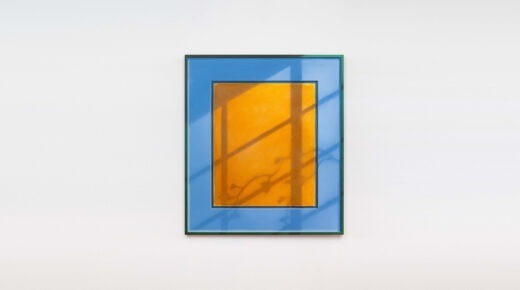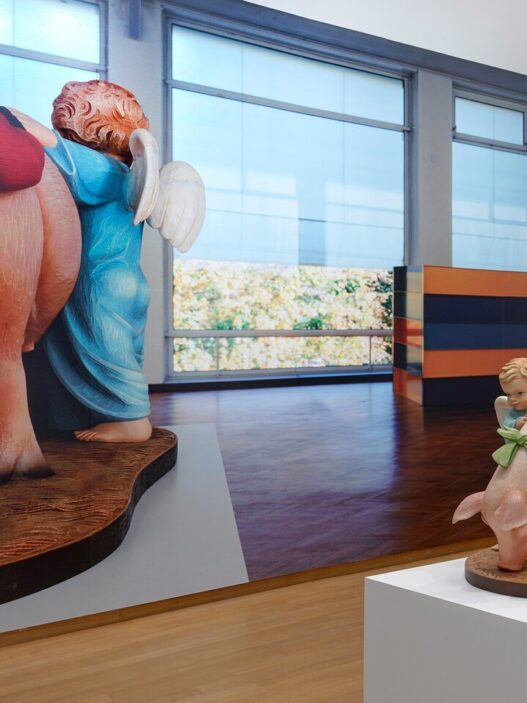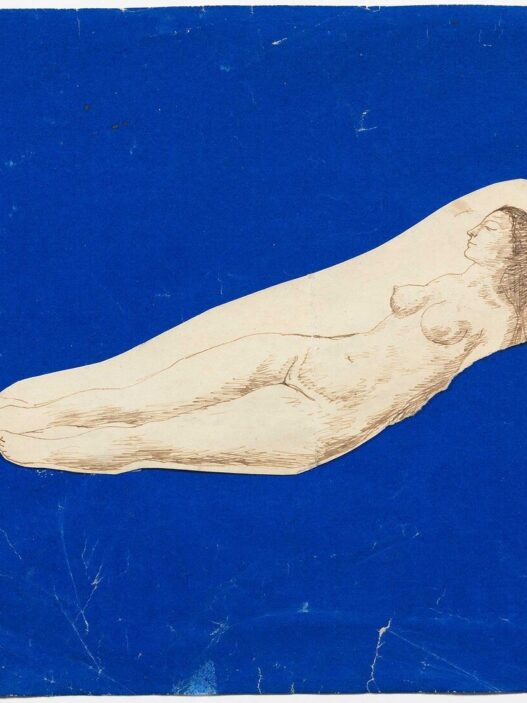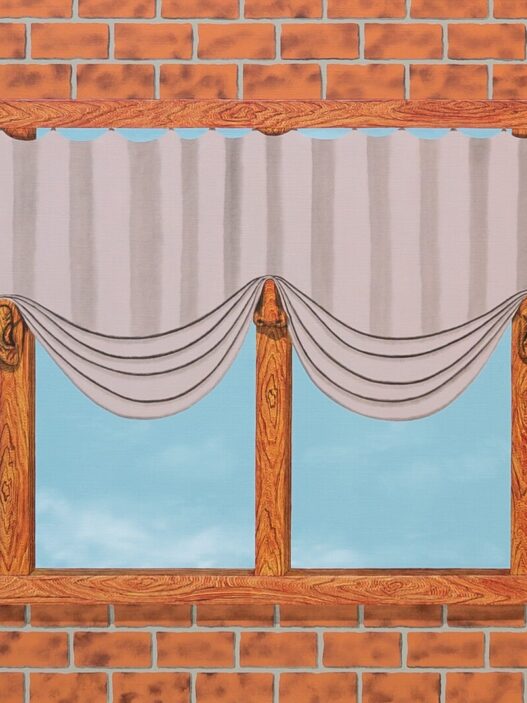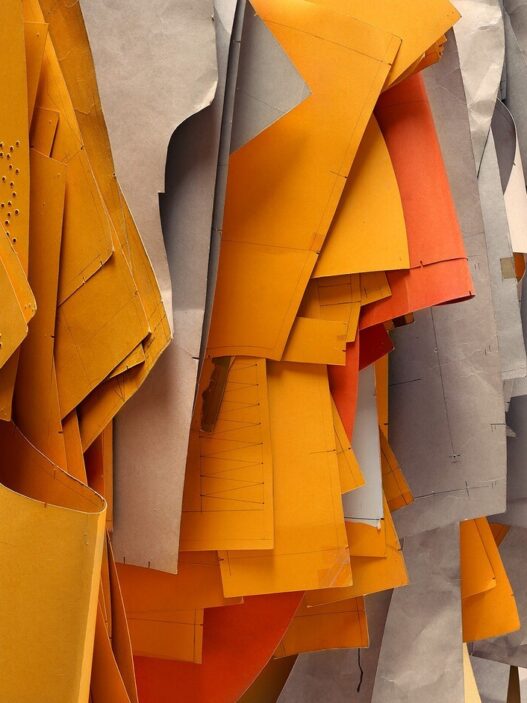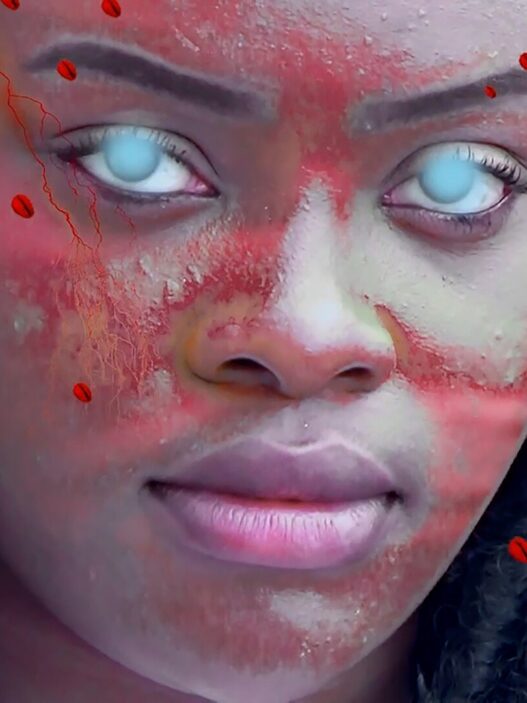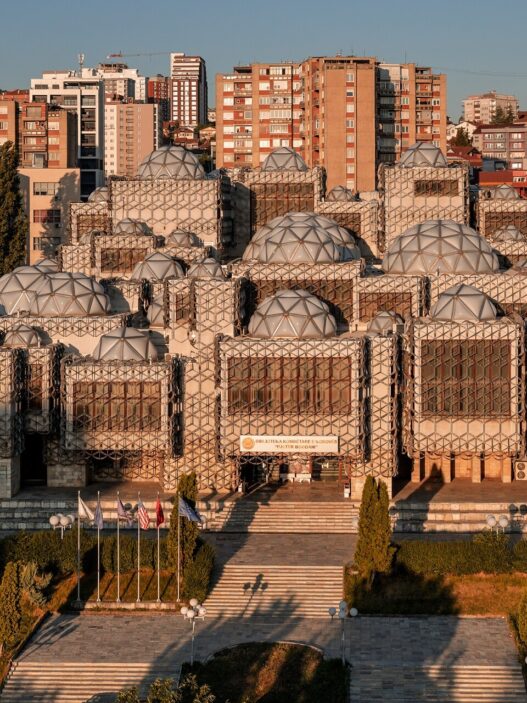October 1 – 30, 2022
Christopher Page’s debut solo show with the gallery Fading Light in the Picture Gallery is presented by Dirimart. The show features works that play with light or with its disappearance, as suggested by the exhibition’s name. Along with the most recent hiss shadows series, the body of work also contains three other series. Recognizing the breadth of Page’s mastery in transforming the two dimensional into three, the gallery setting takes on the function of the paintings themselves.
This exhibition serves as both a mise-en-scene and a mise-en-abyme. We find themselves in an abstracted picture gallery in the main gallery area, painted red (as picture galleries historically were in England and elsewhere), with paintings that are actually paintings of paintings. Directly painted into the walls of the actual gallery are the picture gallery and its windows. Thus, we have a real gallery with real paintings of illusionary paintings inside of an illusory gallery. We can see a blazing sky beyond the large windows that feels both real and surreal, far away and uncomfortably close. The shadows that the blazing sky looks to cast are also painted effects, although they appear to cast light on the paintings.
In order to reflect on our artificial world of today, this mise en scene is a condensation of a dream vision that borrows from specific periods of art history. The paintings look to be modernist monochromes mounted inside vibrant frames, but these are painted illusions, just like everything else. In England, during the turbulent Georgian era—the time of Turner and Constable, whose works we may also detect echoes in this exhibition—the trend for red picture galleries peaked, maybe as a result of the Pompeii excavations that got underway in the 18th century. Red and the peculiar look of painted representations of paintings—paintings of paintings that appear to hang on the walls but are actually illusions—are common elements of Pompeiian frescoes. Indeed, it was after his first trip to Pompeii and to the Naples Archaeological Museum that Page began painting his own “paintings of paintings.”
The experience of viewing artworks in a gallery is distanced by this abysmal condensation that seems to be dreamlike. Not only are we in a gallery viewing paintings, but we are in a gallery within a gallery viewing paintings within paintings. The tone of this mise en scene, while colorful and synthetic, is definitely filled with melancholy and apocalyptic brooding; nonetheless, this is not a cold, ironic distance.
The next chamber is a green one with a single window painting that allows us to glimpse that blazing sky hanging over us once more. The apocalyptic gloom continues here. The final room, a drab one with three empty mirrors that do not reflect us back, is more subdued in its melancholy. Our eyes have a difficult time adjusting to the space in these paintings’ surfaces. Are we looking at their carefully modulated surfaces or through them, into the “room” that is suggested by their apparent reflection? Do we become nothing more than ghostly viewers of this emptied scene, or can we discover ourselves inside them?
Layered meditation on painting, pictures, and fabrication can be found in Fading Light in the Picture Gallery. Paintings by illusionist Page do not accurately depict real-world items. The sheen in Page’s mirrors is more akin to a Photoshop effect than any actually reflective surface, and the shadows are composed by the artist with the aid of a computer rather than being observed from the light in his studio. They are paintings that implicitly represent phenomena, representations of representations. The mediation of our experience and how far the world feels from us today are also themes in his work. How can we find our place in a world that seems so ethereal and unreal? And if we can’t completely do away with illusions, how may we at least conjure up better ones? With the world beyond our façades becoming ever more tumultuous, the question is a burning one.
Christopher Page (b. 1984). He received his MFA from Yale School of Art in 2011. His works explore abstraction and representation by combining hard-edged compositional strategies with illusionistic painting techniques. He produces visual paradoxes and complicate the ongoing dialogue between light and space. His works deepens the complex relationship between the imaginary and the symbolic registers in the architectural space. He is an editor of Effects, a journal of art, poetry and essays. His solo exhibitions include Knots (with Clementine Keith-Roach), P.P.O.W, New York (2022); Shadows & Reflections, Ben Hunter, London (2020); The Four Seasons, Bill Brady, Miami (2019); Opening, Baert, Los Angeles (2018); Museu de Arte Moderna, Rio de Janeiro (2017); Residuals (curated by Chris Sharp), Instituto Inclusartiz, Rio de Janeiro (2016); Dawn, Hunter/Whitfield, London (2015); Pictures, Sushi Bar Gallery, New York (2014); Bespoke Solutions, Hannah Barry Gallery, London (2012). His important group exhibitions are: Public Gallery, London (2022); Art Basel Miami Beach (2021); Nitra Gallery, Athens (2016); and Gerald Moore, London (2014). His works are included in public collections of Museu de Arte Modern, Rio De Janeiro and The Potteries Museum & Gallery in UK. He lives and works in London.
DİRİMART DOLAPDERE Irmak Caddesi 1-9 34440 Dolapdere İstanbul
+90 212 232 66 66









